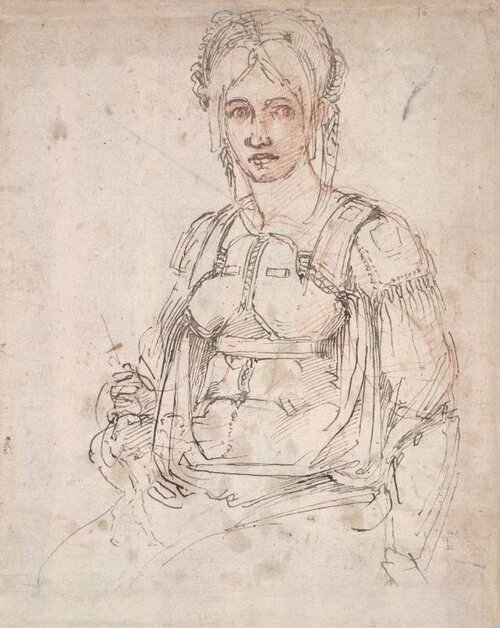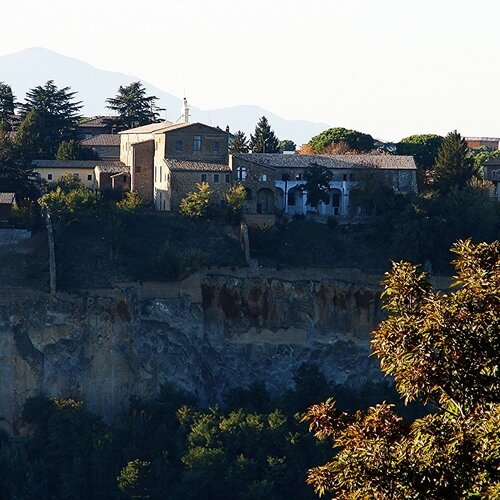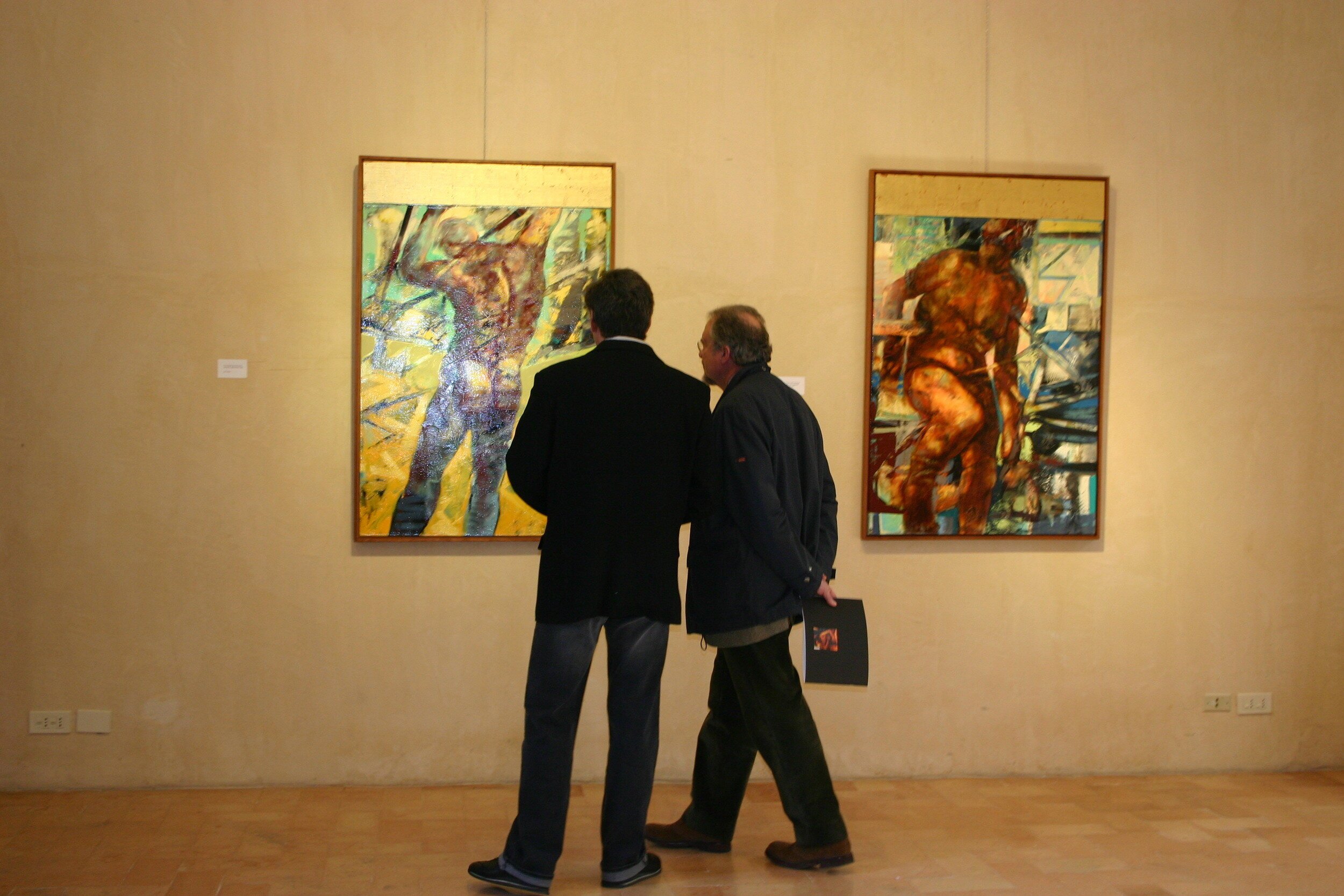THE MISSION OF THE STUDIO IS TO PUT THE ARTS BACK TO WORK IN THE PLACES WHERE
CHURCHES, SCHOOLS, AND COMMUNITIES GATHER TO DO THEIR WORK
VIRTUES & VICES: LOST ... AND FOUND?
John Skillen (2023)
The seven virtues and vices had a long shelf-life in Western cultural history, richly encountered in the arts, now defunct. Do they deserve to be resuscitated? Can the visual arts again play a role in revitalization?
A distinguished Italian theologian provides some points of reference for navigating Luca Signorelli’s masterful visual treatment of the End Times and the Last Judgment in the San Brizio Chapel. Translated from Italian by John Skillen.
Our goal was to recover for a contemporary audience the rich set of resonances between a medieval play, a painting, a place, and a devotional text.
L'ALBERO DELLA VITA, OR THE TREE OF LIFE
Mara Nerbano (2019)
ARTS OF DEVOTION: FRANCIS AND DOMINIC
John Skillen (2019)
Why did the visual arts find such a welcome place in the preaching, teaching, and devotional practices of Franciscan and Dominican monasticism?
Actors in white linens shower the crowd with tiny flower petals. This night’s itinerant theatre performance has transformed into a banquet in which actors and audience are no longer separated, the barriers gone. On these ancient stones is laid out a banquet of laughter, food and wine, and all are invited.
Strangers and Other Angels
Karin Coonrod (2019)
The Orvieto Duomo offers an example of decoration woven together into a coherent theme, namely, God’s investment of Himself from beginning to end in the human flesh formed “in his image.”
INCARNATING THEOLOGY IN THE ORVIETO DUOMO
John Skillen (2018)
ADAPTING AND DIRECTING THE MERCHANT OF VENICE IN THE VENICE GHETTO
Karin Coonrod (2017)
“The Ghetto represents a thriving hub of Jewish world culture, but also a once-quarantined island, confined and marginalized by the dominant Venetian culture. I found myself wondering whether a performance in this re-born Ghetto of 2016, with its inherent contradiction, might uncover something new in the play and in the culture. Perhaps the exorcising of Shylock’s ghost might send an urgent message that we need to hear now more than ever.”
A NEW MADONNA DELLA MISERICORDIA IN ORVIETO
John Skillen (2016)
As an experiment in visual ecumenism, Bruce Herman and Matt Milliner brought together their studio art and art history classes to create a painting that questioned traditional Christian divisions.
The scenes from the life of Mary in the Orvieto Duomo are marked by “intimate glimpses” and a “tenderness of human interactions” (Sara James) among the holy family.
The Holy Family in the frescoes of the Orvieto Duomo
John Skillen (2016)
A number of months after we started attending St Cuthbert's, the music director approached me and said, "You write poetry. Do you want to write a poem for Pentecost?" My reply was an immediate, "Not a chance. I am not a religious poet."
Writing POEMS FOR SUNDAY
John Terpstra (2015)
DISCOVERING ART IN ITS PLACE
John Skillen (2014)
“The experience cracked me out of amuseum and gallery mentality and opened my eyes to the long run of centuries in medieval and Renaissance Europe when nearly all artworks were commissioned by or for a particular group for its use in a particular location.”
Art creates another significant link between Gordon College’s part of the globe and the Servite monastery in Orvieto. In a lush eclectic gallery of the Isabella Stuart Gardner Museum in Boston hangs a five-panel polyptych of the Virgin and Saints—a piece from the church of the Servi in Orvieto.
IL CONVENTO DEI SERVI
Agnes Howard (2014)
VITTORIA COLONNA & HER CORRESPONDENTS: MARGUERITE DE NAVARRE & MICHELANGELO (PART 3)
Damon Di Mauro (2013)
Perhaps no other aspect of Vittoria’s life has been more scrutinized than her association with Michelangelo. We know that Vittoria and Michelangelo were in frequent contact during her stay at San Paolo.
VITTORIA COLONNA & THE REFORMIST MOVEMENT (PART 2)
Damon di Mauro (2013)
Vittoria Colonna found in evangelismo a new outlet for her poetry, well suited to her own religious and lyric sensibilities.
VITTORIA COLONNA AT SAN PAOLO (PART 1)
Damon di Mauro (2013)
On March 17, 1541, a noblewoman of a certain age in widow’s weeds appeared before the door of the Convent of San Paolo in Orvieto, seeking refuge. According to Jacob Burckhardt, she was “the most famous woman” of sixteenth-century Italy.
This essay by the director of the Studio for Art, Faith & History sets the context for much of the work of the Studio, which is to encourage faith-based communities and associations to put art back to work in the places where they gather to do their work. Happily, some of the comments about the autonomy of the artist that begin the essay are gradually becoming out-of-date as new currents in socially-engaged art, community art, collaborative art, and commissioned art are recovering the legitimacy they once had.
who makes the art work?
John Skillen (2012)
RE-ENTERING THE VESTIBULE OF PARADISE: NOTES ON MONASTERO SAN PAOLO
Agnes Howard (2010)
Italy is dotted with monasteries of obscure identity, old purposes being forsaken, antiquity and cultural value arguing for their preservation. What should be done with an old hulk of a building, often vast and sturdily built, graced with art or good views or fine acoustics?
THE BODY BROKEN
Bruce Herman (2005)
When we stand in a tradition we are not simply trying to maintain a status quo; we’re in the business of translating what is past into what is truly present and thereby extending and elaborating that tradition.


















